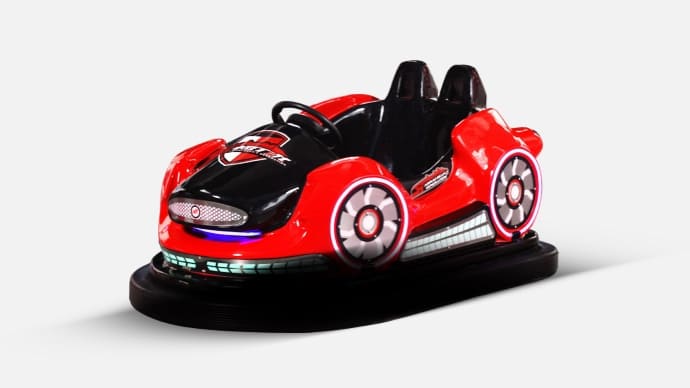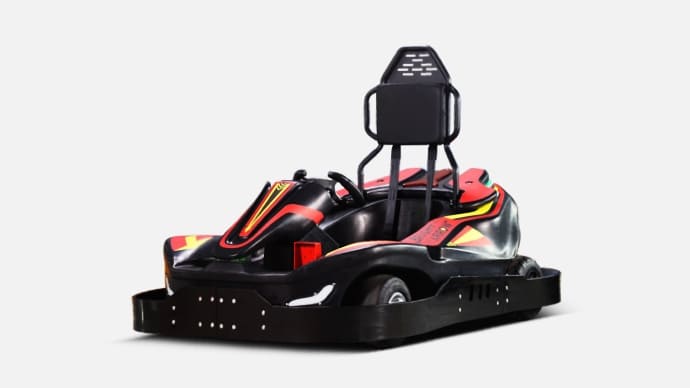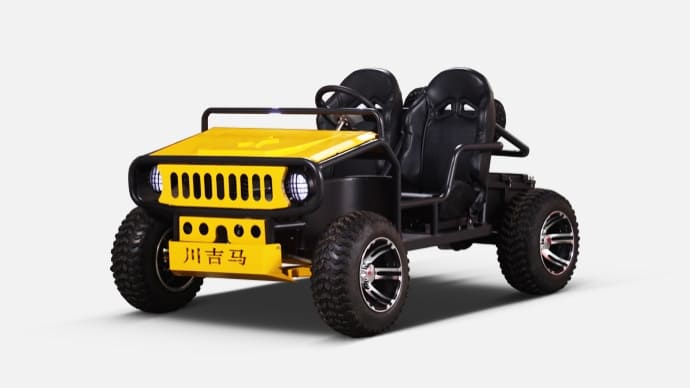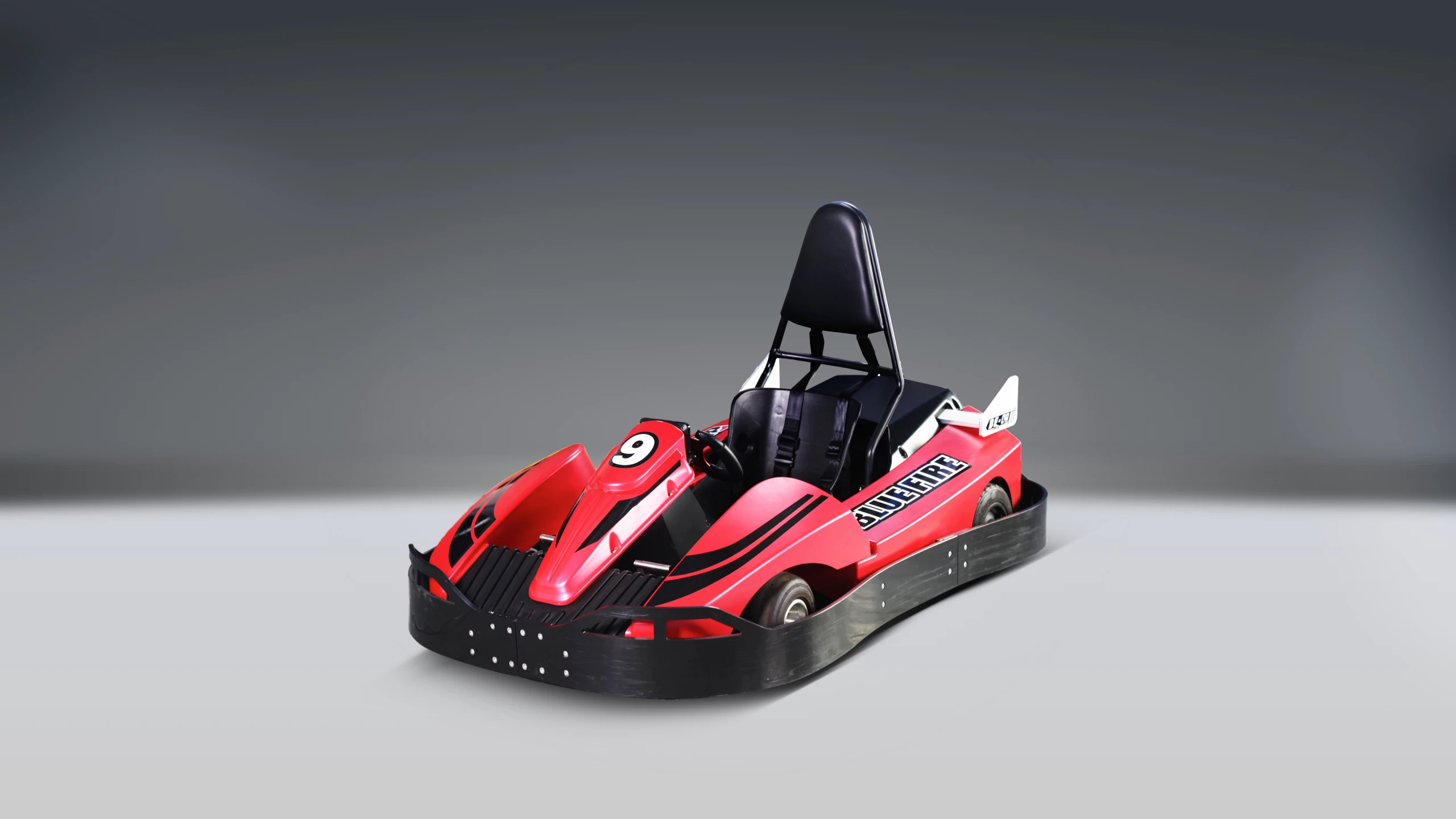Maintenance Tips for Electric Go Karts: Extend Battery Life
- Maintenance Tips for Electric Go Karts: Extend Battery Life
- Why battery care matters for Electric Go Karts
- About ANCHI Amusement — Expertise in Electric Go Karts
- Choose the Right Battery Chemistry for Your Electric Go Karts
- Battery Chemistry Comparison
- Follow Proper Charging Practices for Electric Go Karts
- Charging Rate and C-Rate Guidance
- Avoid Deep Discharge and Shallow Cycles
- Temperature Control: Keep Batteries in the Right Range
- Storage Best Practices for Idle Periods
- Install and Maintain a Battery Management System (BMS)
- Routine Inspections and Preventive Maintenance
- Use Smart Charging Routines and Scheduling
- Optimize Vehicle Settings and Driving Behavior
- Keep Cooling Paths Clear for Motors and Controllers
- Record-Keeping and Battery Lifecycle Tracking
- When to Replace Batteries in Electric Go Karts
- Cost vs. Value: Investing in LiFePO4 for Commercial Use
- Practical Daily Checklist for Operators
- FAQ — Common Questions Operators Ask About Electric Go Karts Batteries
- How long should a kart battery last between charges?
- What is the best way to charge batteries overnight?
- Can I replace lead-acid packs with LiFePO4 in existing karts?
- How does temperature affect battery life?
- What signs indicate a failing battery?
- Who can help with fleet-level battery strategy?
Maintenance Tips for Electric Go Karts: Extend Battery Life
Why battery care matters for Electric Go Karts
Battery health is the single biggest operating cost driver for electric go karts. Proper maintenance improves run time, reduces replacement frequency, and keeps guests happy. Whether your venue uses lead-acid or lithium systems, these maintenance tips will help you get the best life from your batteries while protecting your investment in Electric Go Karts.
About ANCHI Amusement — Expertise in Electric Go Karts
ANCHI Amusement is one of the leading manufacturers of amusement equipment in China. We design and build a wide range of products including adult electric karts, youth karts, and children’s karts. With over 5,000 m² of production space, multiple assembly lines, and a team of 30+ skilled technicians, ANCHI combines R&D, production, sales and after-sales service to help operators run reliable Electric Go Karts venues. Learn more at https://www.anchiamusement.com/.
Choose the Right Battery Chemistry for Your Electric Go Karts
Selecting the correct battery type is foundational. The two most common chemistries in amusement karts are lead-acid (including AGM) and lithium iron phosphate (LiFePO4). LiFePO4 batteries generally offer far more cycles, lighter weight, and better depth-of-discharge tolerance. For high-usage commercial tracks, LiFePO4 is often the better long-term investment despite higher upfront cost.
Battery Chemistry Comparison
| Characteristic | Lead-Acid / AGM | LiFePO4 (Lithium) |
|---|---|---|
| Typical cycle life | 300–800 cycles (varies by use and maintenance) | 2,000–5,000 cycles |
| Energy density | ~30–50 Wh/kg | ~90–160 Wh/kg |
| Recommended max depth of discharge (DOD) | Avoid >50% regularly | Safe up to 80% DOD; ideal to avoid <20% SOC |
| Self-discharge | ~3–5% / month | ~1–3% / month |
| Temperature tolerance | Good, but reduced life in high heat | Sensitive to charging below 0°C; best 0–45°C |
Follow Proper Charging Practices for Electric Go Karts
Correct charging is the easiest way to extend battery life. Use chargers matched to the battery chemistry and voltage. For LiFePO4 packs, use chargers or charge profiles designed for LiFePO4 (float charging is usually unnecessary). Avoid continuous trickle charging of lithium batteries. For lead-acid, use a smart charger with an appropriate bulk, absorption, and float profile.
Charging Rate and C-Rate Guidance
Avoid aggressive fast-charging whenever possible. A charging rate of 0.2C–0.5C (where C is the battery capacity in Ah) balances speed and longevity. Fast charging above 1C shortens cycle life over time; reserve fast charging for emergencies rather than routine use.
Avoid Deep Discharge and Shallow Cycles
Deep discharges shorten battery life. For lead-acid, avoid regularly discharging below 50% state-of-charge. For LiFePO4, try to avoid repeated discharges below 20% SOC. Conversely, many shallow cycles are acceptable for lithium batteries—plan your charging schedule and fleet rotation to minimize extreme states of charge.
Temperature Control: Keep Batteries in the Right Range
Heat is the enemy of battery longevity. Store and charge Electric Go Karts' batteries in a temperature-controlled space when possible. Aim for ambient temperatures between 15–25°C for best long-term life. Do not charge LiFePO4 batteries below 0°C without a battery heater or dedicated pre-heating circuit.
Storage Best Practices for Idle Periods
If karts are not used daily, store batteries at partial charge—around 40%–60% for LiFePO4 and 50% for lead-acid. Disconnect batteries from the system when storing long-term, and check state-of-charge monthly. Use a maintenance charger for lead-acid if storage extends many months.
Install and Maintain a Battery Management System (BMS)
A quality BMS protects lithium packs from over-voltage, under-voltage, over-current, and cell imbalance. A BMS also provides useful telemetry for state-of-charge and fault diagnostics. For commercial Electric Go Karts fleets, insist on BMS-equipped battery packs to protect guests and reduce warranty costs.
Routine Inspections and Preventive Maintenance
Daily and weekly checks prevent small issues from becoming failures. Inspect connectors, wiring, and terminals for corrosion or looseness. Verify charger function and check for unusual heat signatures in motors, controllers, and battery enclosures. Tighten battery hold-downs and keep compartments clean and dry.
Use Smart Charging Routines and Scheduling
Implement a charging schedule that allows batteries to reach a healthy state-of-charge without rapid cycling. Stagger charging so chargers run at optimal efficiency and avoid overloading facility electrical systems. For busy tracks, rotating karts between runs and scheduled charging reduces extremes in battery stress.
Optimize Vehicle Settings and Driving Behavior
Controller tuning, top-speed limiting, and throttle maps affect energy use. For youth or rental karts, tune controllers to reduce aggressive acceleration peaks that drain batteries rapidly. Train staff to avoid unnecessary idling and high-RPM starts which waste energy and generate heat.
Keep Cooling Paths Clear for Motors and Controllers
Overheating in motors and controllers stresses batteries indirectly by demanding higher current. Ensure ventilation grills and cooling fans are clear of debris. Regularly inspect cooling ducts and replace worn fans or damaged heat sinks.
Record-Keeping and Battery Lifecycle Tracking
Track cycles, run-times, charge histories, and maintenance events for each battery pack. Many modern BMS systems record this data automatically. Lifecycle records help you predict replacement timing, budget for fleet refresh, and identify poor-performing packs early.
When to Replace Batteries in Electric Go Karts
Replace batteries when run-time falls below the business threshold, internal resistance rises, or cell imbalance cannot be corrected. For lead-acid, this often appears at 300–800 cycles. For LiFePO4, expect 2,000+ cycles but monitor for capacity fade beyond 20–30% of original capacity.
Cost vs. Value: Investing in LiFePO4 for Commercial Use
Although LiFePO4 batteries have higher upfront cost, their longer cycle life, lower maintenance, and reduced weight typically produce lower total cost of ownership (TCO) for high-usage Electric Go Karts operations. Evaluate TCO including replacement frequency, downtime, and guest satisfaction.
Practical Daily Checklist for Operators
- Visual check of battery pack and connectors before opening hours. - Confirm charger status lights and connections. - Rotate karts to balance usage across the fleet. - Put partially discharged packs on scheduled charging between sessions. - Log anomalies (rapid discharge, overheating, unusual noises) for immediate follow-up.
FAQ — Common Questions Operators Ask About Electric Go Karts Batteries
How long should a kart battery last between charges?
Run time depends on battery capacity and kart load. Typical commercial Electric Go Karts run 30–90 minutes per full charge. Higher-capacity lithium packs often deliver the longer end of this range; track layout and driver behavior also strongly affect runtime.
What is the best way to charge batteries overnight?
Use a charger matched to the battery chemistry with appropriate charge profile. For LiFePO4, avoid float charging overnight; use chargers with a proper LiFePO4 termination. Maintain a cool, ventilated charging area and stagger chargers to prevent electrical overload.
Can I replace lead-acid packs with LiFePO4 in existing karts?
Often yes, but check space, mounting, voltage, and BMS integration. Conversion can bring weight savings and longer life, but requires electrical compatibility checks and may need controller parameter adjustments. Consult your manufacturer—ANCHI Amusement can advise on retrofit options.
How does temperature affect battery life?
High temperatures accelerate degradation; keep batteries cool during use and storage. Charging LiFePO4 below 0°C can damage cells—avoid or use pre-heating. Optimal long-term temperatures are typically 15–25°C.
What signs indicate a failing battery?
Rapid capacity loss, inability to reach full charge, cell imbalance, excessive heating, and swollen cases are all signs of battery failure. If you see any of these, remove the pack from service and have it tested or replaced.
Who can help with fleet-level battery strategy?
Manufacturers like ANCHI Amusement offer guidance on battery selection, charger specification, and venue-level design to maximize uptime and reduce operating costs. Visit https://www.anchiamusement.com/ to learn about fleet solutions and custom go-kart manufacturing.
Wholesale electric go kart motor kit manufacturer and supplier
Custom adult electric go kart Manufacturers and suppliers in China
ANCHI best professional electric go kart racing Manufacturers and supplier brand in China
ANCHI best professional custom go kart for sale Manufacturers and supplier brand in China
About Product Choice
What is the difference between different products?
Different products have different sizes, functions, and appearances, as well as the sense of experience, crowd use, and venue needs. Please choose according to your venue and suitable audience.
About Logistics
Does your product support global logistics and distribution?
Yes, our products support global logistics and distribution services, and you can receive our products anytime and anywhere.
About Customized Service
Is there a minimum order quantity requirement for customization services?
Customized services may have minimum order requirements based on your specific needs and product type, please consult our sales team for details.
After Sales Support
How to contact your after-sales customer service team?
You can contact our after-sales customer service team through the contact information provided by our sales manager, and we will provide you with timely help and support.
About Price and Payment
How are the prices of your products determined?
Our product prices are based on a variety of factors, including order quantity, customization requirements, and market competition.

Bright Arrow Electric Go Karts
2024 new model with two powerful hub motors; each motor is 1000 watts with shock absorbers. It has fast-charging iron phosphate lithium that can be cycled 2000 times. It has three speeds. Remote control for starting, checking accounts, and setting volume. LCD dispay for showing speed, battery power, and game time.

Blue Fire Electric Go Karts
Experience the thrill of speed with ANCHI's Blue Fire Electric Go Karts, perfect for both adults and kids. These high-performance electric go karts deliver unparalleled excitement while ensuring safety and reliability. Ideal for family fun or competitive racing, our electric go karts blend innovation with cutting-edge technology. Explore the future of racing with ANCHI, where performance meets sustainability. Discover more today and rev up your passion for adventure with our premium electric go karts.

Cyclone RS 2025 1200W Electric Go-kart for Home Entertainment Centers
The Cyclone RS 2025 is a high-performance electric ride-on car designed for thrill-seekers, entertainment centers, and commercial amusement businesses. Built with a durable ABS body and reinforced metal chassis, it combines strength, safety, and speed for a superior driving experience. With a 1200W mid-mounted motor (peaking at 3600W), advanced control system, and long-lasting 72V20AH LiFePO₄ battery, this ride ensures both powerful performance and reliability.
Whether for amusement parks, game zones, rental businesses, or personal recreational use, the Cyclone RS 2025 delivers unmatched excitement and durability.
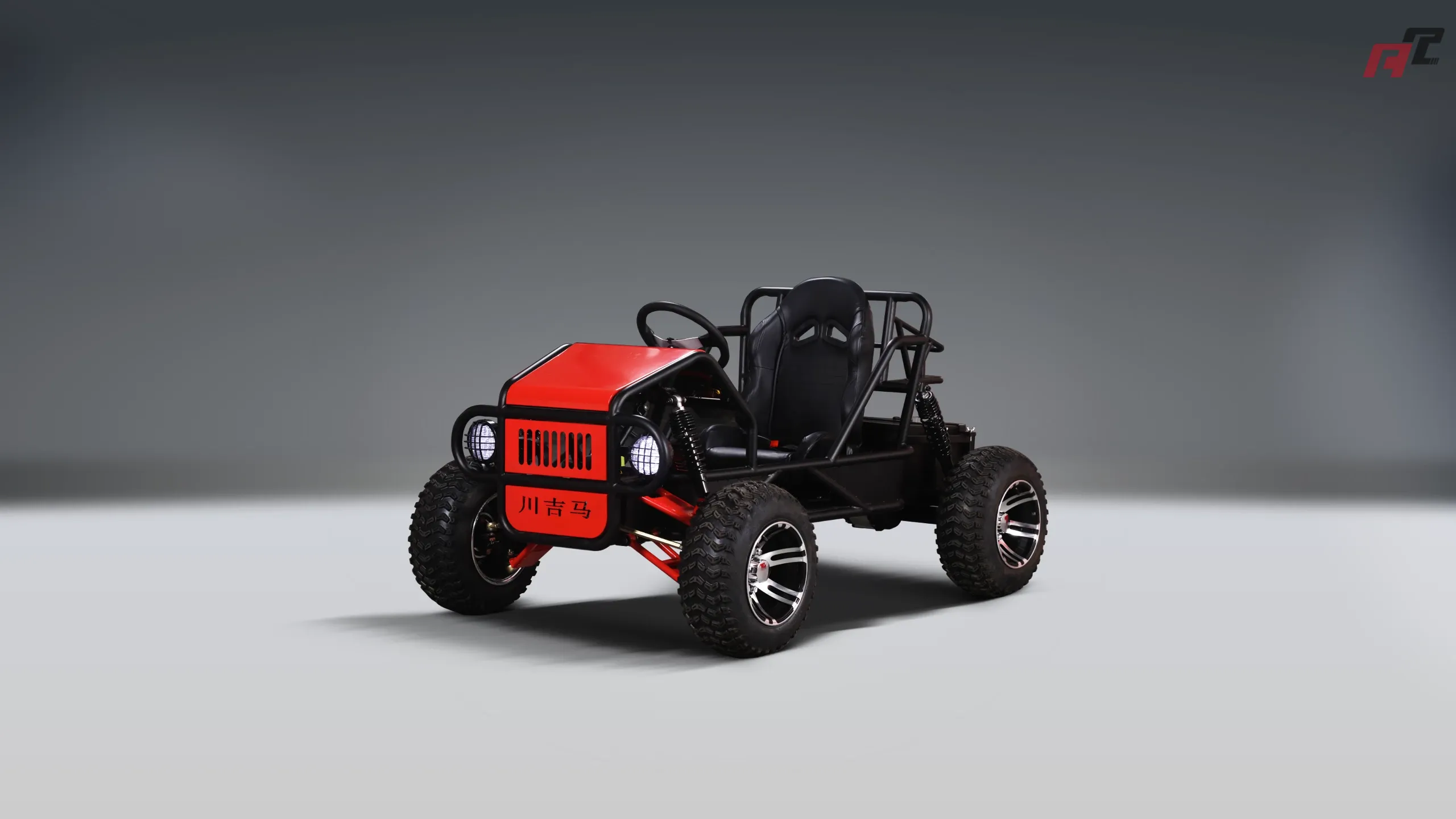
Kids Electric Off Roads One-seater ATV
Discover adventure with the ANCHI Kids Electric One-seater ATV, the perfect electric off-road experience for young explorers. Designed for safety and performance, this electric off-road go kart for kids offers unmatched thrills on any terrain. Its durable build and easy-to-use controls ensure a fun and safe ride. Ideal for budding adventurers, this ATV promises endless excitement. Explore the world with confidence with ANCHI’s innovative electric off-road solutions for kids.


